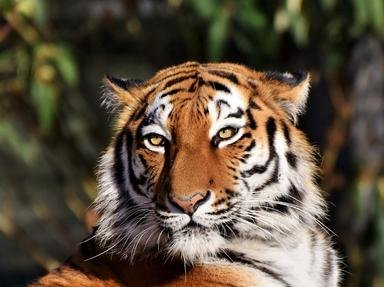Quiz Answer Key and Fun Facts
1. This unusual-looking felid can be found in the lowlands of northern Mexico extending as far south as Brazil and Argentina. Known for its short legs, long slender body, and lack of markings, which wild cat is it?
2. With a colorful blend of stripes and spots, this wild cat is one of the most beautiful. Its habitat includes parts of the U.S. southwest extending down to the South American countries of Brazil and Argentina. Name this nocturnal carnivore.
3. The lynx can be easily identified by its black tufted ears. There are four species of lynx. Which species is well adapted to cold climates and has the scientific name Lynx canadensis?
4. This big cat belongs to the genus Panthera. Quite formidable at chasing prey, it's the largest carnivore in Africa and second largest cat. Don't let your pride get in the way of guessing which cat it is.
5. Relative to its size, which African wild cat has the largest ears of any felid?
6. The scientific name for this cat is Felis margarita. The true desert is its home. Resembling a domesticated house cat, name this sand-colored species.
7. Closely related to the ocelot, this wild cat's distinctive features are its large eyes and very long tail. Which of the following cats is it?
8. Of all the big cats, this one has the largest distribution of any wild cat. It is also the smallest of the big cats. Known for its golden fur covered in spots, which of the big cats is it?
9. It's the largest and heaviest of all cats. With its distinctive reddish fur covered in stripes, name this powerful predator.
10. Sometimes known as Steppe cat, this heavily coated wild cat is well adapted to cold climates of Mongolia, Russia, and China. A distinguishing characteristic has to do with the eyes. Instead of having pupils that are slits, this cat's pupils are round. Name this distinctive-looking felid.
Source: Author
nmerr
This quiz was reviewed by FunTrivia editor
guitargoddess before going online.
Any errors found in FunTrivia content are routinely corrected through our feedback system.


